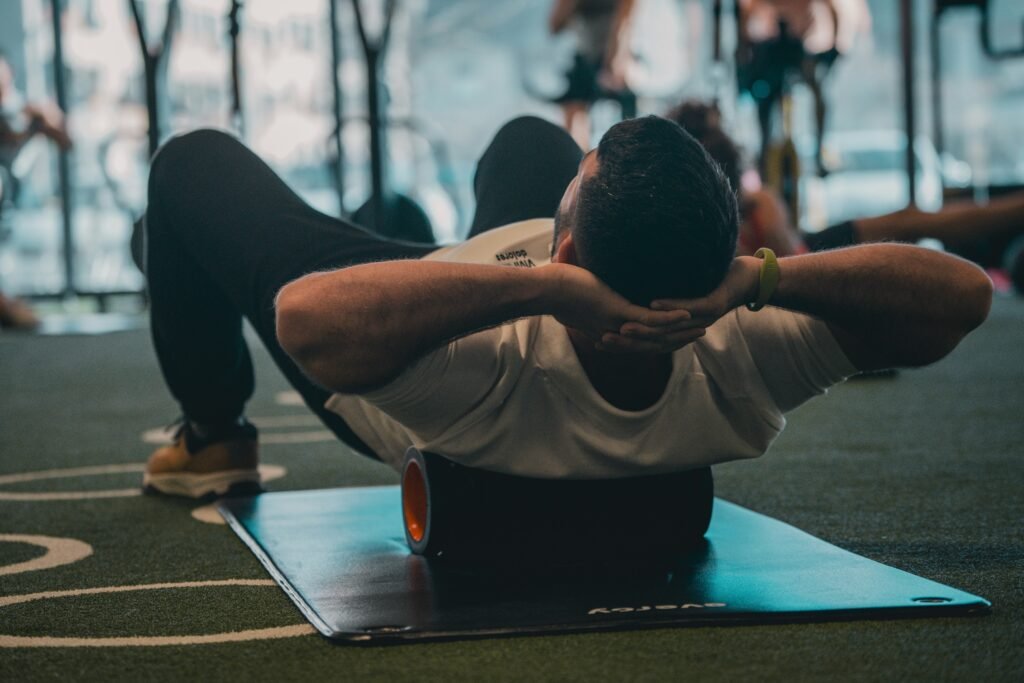Your complete science-backed guide to tendonitis recovery — heal faster, reduce pain, and stay active safely.
Tendonitis (or “tendinitis”) is one of the most common overuse injuries among athletes, gym-goers, and even desk workers. It happens when tendons — the tough, fibrous tissues that connect muscle to bone — become inflamed or irritated. Common areas include the shoulder, elbow, wrist, knee, and Achilles tendon.
If untreated, tendonitis can become chronic and even progress to tendinosis (degeneration), which takes much longer to heal. The good news? With the right recovery strategies, you can heal faster, reduce pain, and stay active without risking long-term damage.
Quick Fact: Research shows most tendonitis cases improve in 4–8 weeks with proper care, though severe cases may take 3–6 months.
What Exactly Is Tendonitis?
Tendons are built to handle tension, but repetitive stress or sudden overload causes microtears and inflammation. Tendonitis can result from:
- Overuse: Repeating the same movement too often (e.g., typing, tennis swings, running).
- Poor biomechanics: Weak supporting muscles or bad posture add stress to tendons.
- Sudden load increase: Jumping into heavy lifting or high mileage too quickly.
- Aging: Blood flow to tendons decreases with age, slowing healing.
Why Fast Recovery Matters
Many people “push through” tendon pain, but ignoring it risks chronic damage. Healing quickly is essential to:
- Prevent degeneration: Chronic tendonitis can become tendinosis — harder to treat.
- Stay active: Proper recovery allows modified exercise instead of full rest.
- Improve longevity: Healthy tendons keep you moving well into later life.
A 2019 study in the British Journal of Sports Medicine showed that early rehab interventions reduced recovery time by 40% compared to passive rest.
Step 1: Reduce Pain & Inflammation
During the first 48–72 hours, focus on calming the tendon.
Acute Phase (0–3 days)
- Ice therapy: Apply 15–20 minutes, 2–3x/day to reduce pain.
- Compression: Use wraps or sleeves to control swelling.
- Elevation: Keep limb elevated if possible.
- Active rest: Avoid painful movements but keep blood flowing with gentle mobility.
Step 2: Controlled Loading (The Key to Recovery)
Unlike muscles, tendons require slow, progressive loading to stimulate healing. Complete rest leads to stiffness and weaker tissue.
Eccentric Exercises
| Tendon Area | Exercise | How To |
|---|---|---|
| Achilles | Heel drop | Rise on both feet, lower slowly on one. |
| Patellar | Decline squat | Squat on a slant board, focus on slow lowering. |
| Elbow (Tennis) | Wrist curl eccentric | Lift weight with both hands, lower with one. |
Step 3: Mobility & Flexibility
Restoring range of motion is critical. Use gentle stretches:
- Calf stretch: For Achilles tendonitis.
- Hamstring stretch: For knee-related tendonitis.
- Forearm stretch: For tennis/golfer’s elbow.

Step 4: Strength Training to Prevent Recurrence
After pain subsides, focus on strengthening supporting muscles.
- Achilles: Calf raises, single-leg balance.
- Knee: Glute bridges, quad strengthening.
- Shoulder: Rotator cuff band work, scapular control.
- Wrist/Elbow: Grip strengthening, pronation/supination with bands.
Lifestyle & Nutrition for Faster Healing
- Sleep: Growth hormone boosts tendon repair during deep sleep.
- Nutrition: Eat protein-rich meals with collagen, vitamin C, and omega-3s.
- Hydration: Tendons are 60–70% water — dehydration delays healing.
- Supplements: Collagen peptides + vitamin C pre-training show promising results.
Sample 4-Week Tendonitis Recovery Plan
| Week | Focus | Exercises |
|---|---|---|
| 1 | Pain management | Ice, mobility, light stretching |
| 2 | Controlled loading | Eccentric drills, gentle strengthening |
| 3 | Strength + stability | Resistance training, balance drills |
| 4 | Return to sport | Sport-specific drills, gradual load increase |
FAQs About Tendonitis Recovery
How long does tendonitis take to heal?
Mild cases may resolve in 2–4 weeks, while chronic cases can take 3–6 months. Early rehab shortens recovery time.
Can I keep working out?
Yes — but avoid painful movements. Swap to low-impact cardio (cycling, swimming) and strengthen supporting muscles.
Should I use heat or ice?
Ice helps during the first 72 hours. After that, heat may improve blood flow and relaxation.
Download Your Free Tendonitis Recovery Tracker (PDF)
Track your pain, mobility, and progress week by week with our printable recovery planner.
Download NowFinal Thoughts
Tendonitis can feel frustrating, but with the right balance of rest, controlled loading, mobility, and nutrition, you can heal faster and stay active. Don’t ignore pain — adapt your training, strengthen supporting muscles, and fuel your body for recovery.
Consistency is key. Tendons take longer to heal than muscles, but with a structured plan, you’ll come back stronger and more resilient than before.


